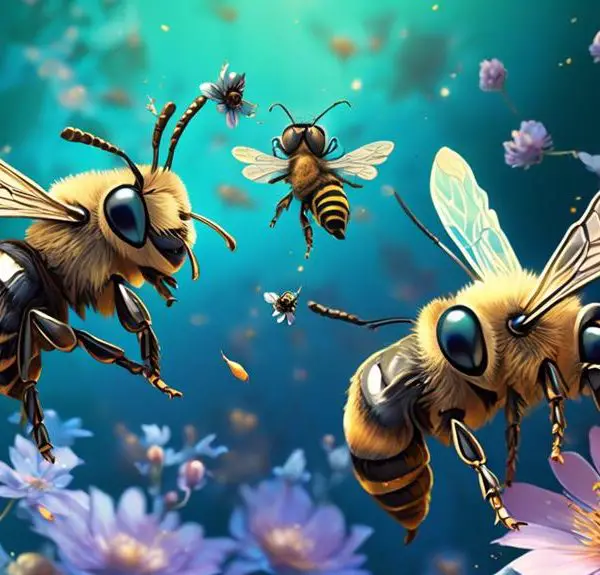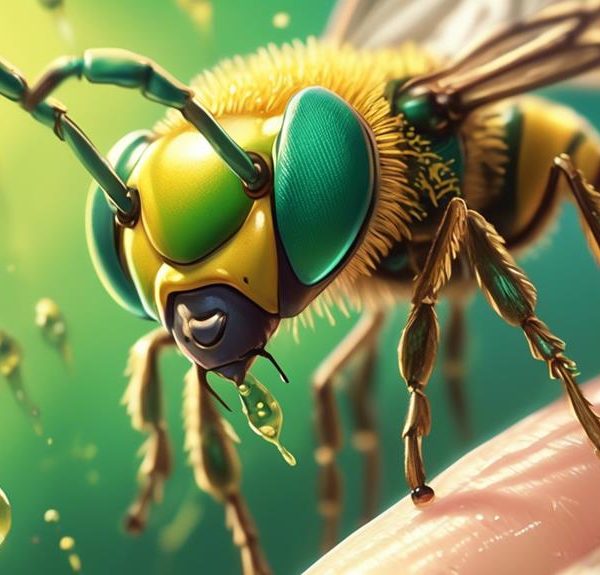Navigate the microcosm of Sweat Bees and Hoverflies, discovering their unique roles and characteristics in our ecosystem.
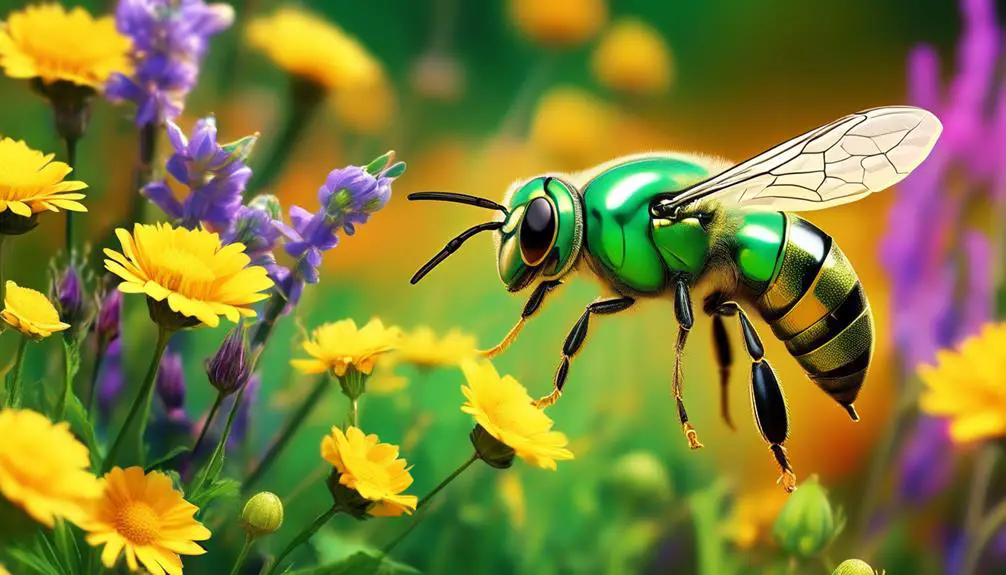
Sweat Bees Vs Hoverflies
Imagine yourself as a knight in shining armor, but instead of a massive dragon, your quest involves the diminutive world of insects, specifically sweat bees and hoverflies.
You're not alone in your journey, as we'll venture together into this fascinating microcosm, comparing and contrasting these two often overlooked creatures.
Sweat bees and hoverflies, though they might appear similar at first glance, each have unique characteristics and roles in our ecosystem that differentiate them.
Stick around, as we're just scratching the surface of this intricate bug battle.
Key Takeaways
- Sweat bees and hoverflies belong to different families, with sweat bees being in the Halictidae family and hoverflies in the Syrphidae family.
- Sweat bees are attracted to human sweat due to the salts and electrolytes present, while hoverflies are often mistaken for bees or wasps due to their appearance.
- Both sweat bees and hoverflies are attracted to flowering plants and play a crucial role in pollination.
- Sweat bees are non-aggressive unless provoked and their sting is often less painful than a regular bee sting.
Understanding Sweat Bees

To grasp the unique nature of sweat bees, it's crucial to delve into their intriguing biology, behavior, and their notable preference for human sweat. You'll find that these petite pollinators, belonging to the Halictidae family, aren't your regular bees. Unlike their fellow buzzing counterparts, sweat bees are solitary creatures, with females individually constructing and provisioning nests. But what really sets them apart is their peculiar palate for perspiration.
Their attraction to human sweat isn't a mere coincidence. It's actually a fascinating example of evolutionary adaptation. Sweat bees crave the salts and electrolytes present in your sweat, which are vital for their survival and reproduction. These nutrients are scarce in their typical floral diet, hence their unusual dietary supplement.
Behaviorally, they're non-aggressive unless provoked. You'll rarely receive a sting from a sweat bee, and if you do, it's often less painful than a regular bee sting. However, your sweat's scent can trigger their curiosity, leading them to land on your skin while they seek out those precious minerals.
Discovering Hoverflies

While sweat bees might pique your interest with their peculiar habits, another group of insects, known as hoverflies, offer an equally fascinating study in adaptation and survival. Belonging to the Syrphidae family, hoverflies are often mistaken for bees or wasps due to their strikingly similar appearance. But don't be fooled. This is a clever act of biomimicry, a survival strategy where harmless species imitate the warning signals of harmful ones to deter predators.
Hoverflies are highly skilled flyers. They can hover in one place, dart in any direction, even fly backwards, hence their name. Their larval stage is equally intriguing. Depending on the species, larvae may be aquatic, semi-aquatic or terrestrial. They're known for their voracious appetite for aphids, making them a gardener's best friend.
Now, let's delve into their nectar-centric diet. Unlike bees, hoverflies don't produce honey, but they're still vital pollinators. As they move from flower to flower sipping nectar, they inadvertently transport pollen, thus facilitating plant reproduction. It's a delicate balance of nature that showcases the hoverfly's integral role within our ecosystem.
Comparing Physical Characteristics
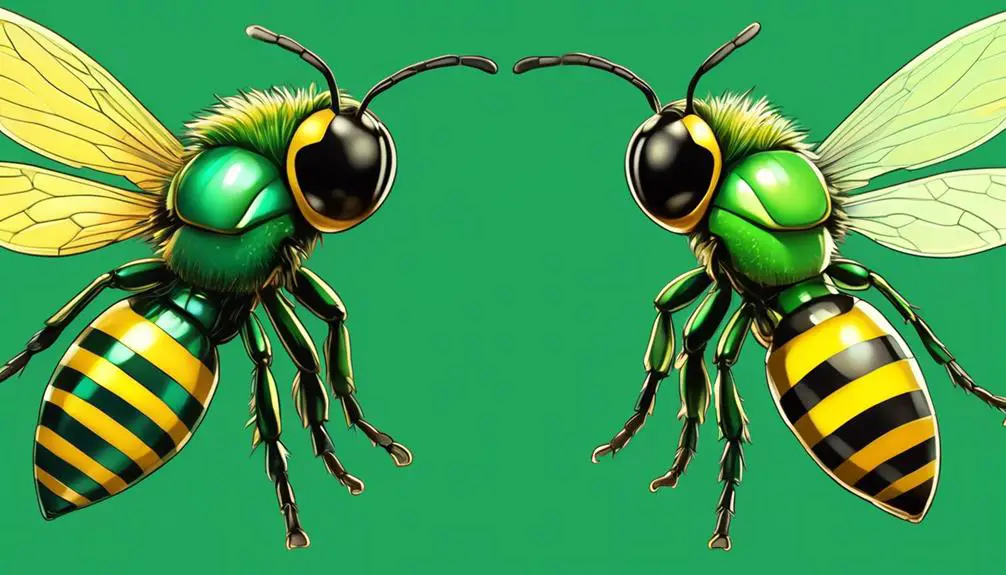
Diving into the physical characteristics, you'll notice distinct differences between sweat bees and hoverflies that go beyond their deceptive appearances.
Sweat bees, belonging to the Halictidae family, appear metallic. Depending on the species, you'll encounter a spectrum of colors from brilliant gold to a deep metallic green or blue. They're small, ranging from 3 to 10 millimeters in size. Their bodies, characterized by a banded pattern on the abdomen, are generally more streamlined than that of hoverflies.
Hoverflies, on the other hand, are part of the Syrphidae family. They've developed an uncanny resemblance to wasps and bees as a defense mechanism. Despite this mimicry, their bodies are generally more rounded and they lack the sting of their doppelgangers. Colorations vary, but many exhibit yellow, black, or brown hues with banding or spots. They're larger than sweat bees, with sizes ranging from 10 to 20 millimeters.
You'll also observe that while both bugs have two wings, hoverflies' wings rest out to the side when not in flight, unlike sweat bees' wings that fold back. In essence, while both can be mistaken for more dangerous insects, their physical characteristics reveal their true identities.
Behavior and Habitat Analysis
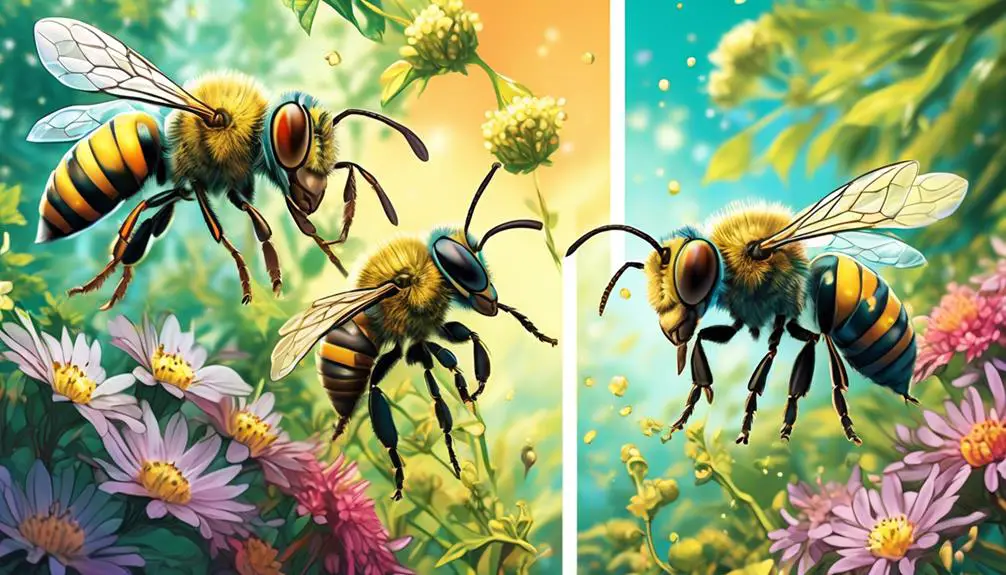
After examining their physical attributes, let's now explore the behaviors and habitats of sweat bees and hoverflies to get a more comprehensive understanding of these intriguing insects.
Sweat bees, belonging to the Halictidae family, are often seen buzzing around gardens due to their preference for flowering plants. They're attracted to human sweat, hence the name, a behavior driven by their need for salt. Highly adaptable, sweat bees can thrive in diverse habitats, from forests and meadows to urban gardens and deserts.
Hoverflies, on the other hand, display a distinct behavior of hovering mid-air, a characteristic that gives them their name. They're important pollinators, and their larvae are voracious predators of pests, making them valuable for pest control. Hoverflies favor environments abundant in flowering plants, such as gardens, meadows, and hedgerows, where they can access nectar and pollen.
The behaviors of these insects are closely tied to their habitats. While they both favor flowering plants, their unique behaviors set them apart. Understanding their behavior and habitat preferences can give us valuable insights into their roles in our ecosystems, their survivability, and their adaptability to changing environments.
Ecosystem Roles Explored
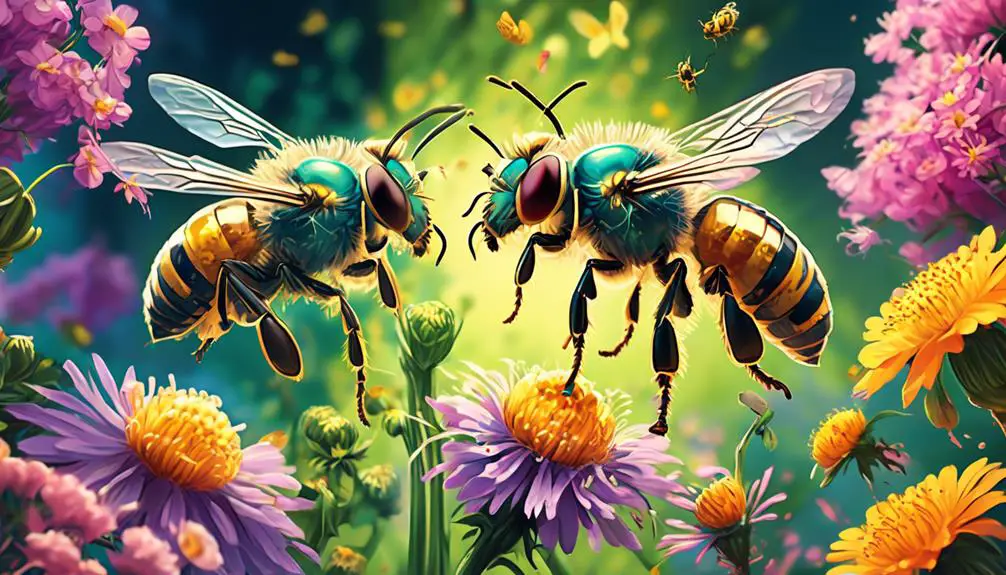
To fully appreciate the importance of sweat bees and hoverflies, you need to delve into their respective roles within the ecosystem. Sweat bees, tiny as they are, play a significant role in pollination. They're known to pollinate a variety of plants including fruits, vegetables, and wildflowers. This makes them indispensable in the sustenance of our natural environment and food production.
Hoverflies, on the other hand, serve a dual purpose. As larva, they're voracious predators, feeding on a range of plant pests like aphids and scale insects. This natural pest control aids in the healthy growth of plants and reduces the need for harmful chemical pesticides. As adults, hoverflies also contribute to pollination, visiting a myriad of flowers in their lifetime.
Therefore, both these creatures, despite their diminutive size, play a monumental role in maintaining ecological balance. They're the unsung heroes of our gardens and farms, working tirelessly behind the scenes. Understanding their roles helps us appreciate their presence and highlights the need for their conservation.
Conclusion
In sum, you've explored the fascinating worlds of sweat bees and hoverflies. Despite their physical similarities, they've unique behaviors and habitats.
While sweat bees are essential for plant pollination, hoverflies control pest populations.
Understanding these insects' roles helps you appreciate their contribution to our ecosystem.
So, the next time you spot one, remember, they're not just buzzing around; they're playing crucial roles in maintaining ecological balance.

